French Architecture – The History of French Architecture
French architecture has had a long and detailed history, and some of the most famous buildings in the world have been indicative of French design. Let’s have a look at the history of French architecture, which is intrinsically connected to the various French architectural styles that have developed over the centuries. We’ll also finally look at a few famous French buildings. Keep reading this article to learn more about French architecture!
Contents
- 1 A Look at French Architecture
- 2 A Brief History of French Architecture
- 2.1 The Gallo-Roman Style (125 BCE – 5th Century CE)
- 2.2 The Pre-Romanesque Style (5th – 9th Centuries)
- 2.3 The Romanesque Style (10th – 12th Centuries)
- 2.4 The French Gothic Style (1140 – 16th Centuries)
- 2.5 The French Renaissance Style (Late 15th – 17th Centuries)
- 2.6 The French Baroque Style (1610 – 1774)
- 2.7 The Rococo Style (1730s – 1760s)
- 2.8 The Neoclassical Style (1760 – 1830)
- 2.9 The Second Empire Style (1852 – 1870)
- 2.10 Modernism and Beyond
- 3 Examples of Famous French Buildings
- 4 Frequently Asked Questions
A Look at French Architecture
French architecture is simply one of the many areas of French existence that have had a profound influence on the rest of Europe and the world. Several architectural styles originated in France, but those that did not originate in the country did develop there into new and innovative forms of themselves. So, let’s have a look at the history of French architecture to see how it has changed over the centuries.

A Brief History of French Architecture
French architecture developed over an immensely lengthy period of time as France is one of the oldest countries within Europe. Its origins as a country under Roman law date back to before the Common Era. So, this also means that the history of French architecture is long and varied.
We will have a look at some of that historical development in brief. Let’s have a look.
The Gallo-Roman Style (125 BCE – 5th Century CE)
Rome had control over France for several centuries and it all started before Julius Caesar conquered the region in 58 BCE. The country had, in parts, been controlled since as early as 125 BCE, but the famed Roman emperor brought the rest of it under his command. This meant that this period of time was characterized by the use of Roman architectural elements, such as the use of domes, vaults, and arches. One of the most famous instances of Roman architecture in the country is Pont du Gard, which is a Roman aqueduct bridge that is still standing to this day.
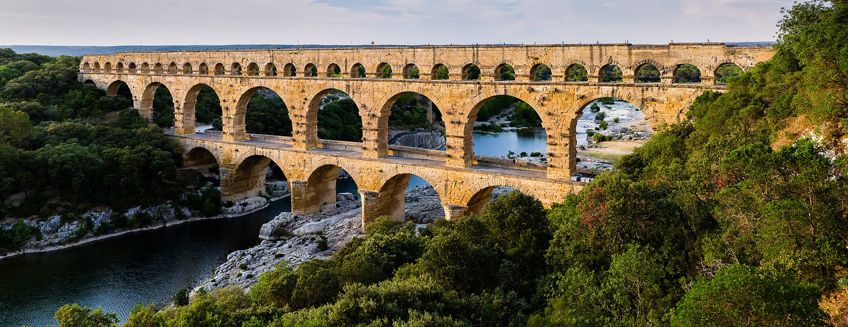
The Pre-Romanesque Style (5th – 9th Centuries)
When the early Frankish forces under Clovis I unified into a singular country, France started to develop as a political powerhouse in its own right. This would first develop under the Merovingian dynasty in which churches and monasteries were built with increased frequency under the Pre-Romanesque style.
This was not wholly confined to this particular dynasty as it eventually transitioned into the Carolingian dynasty.
Carolingian architecture as an early form of Pre-Romanesque French architecture would become a prominent form on the continent because of the immense influence of this empire. However, little of this architecture remains to this day. The famed monastery at Lorsch contains a gatehouse constructed in this style, and it’s one of the best-preserved of its kind in Europe.
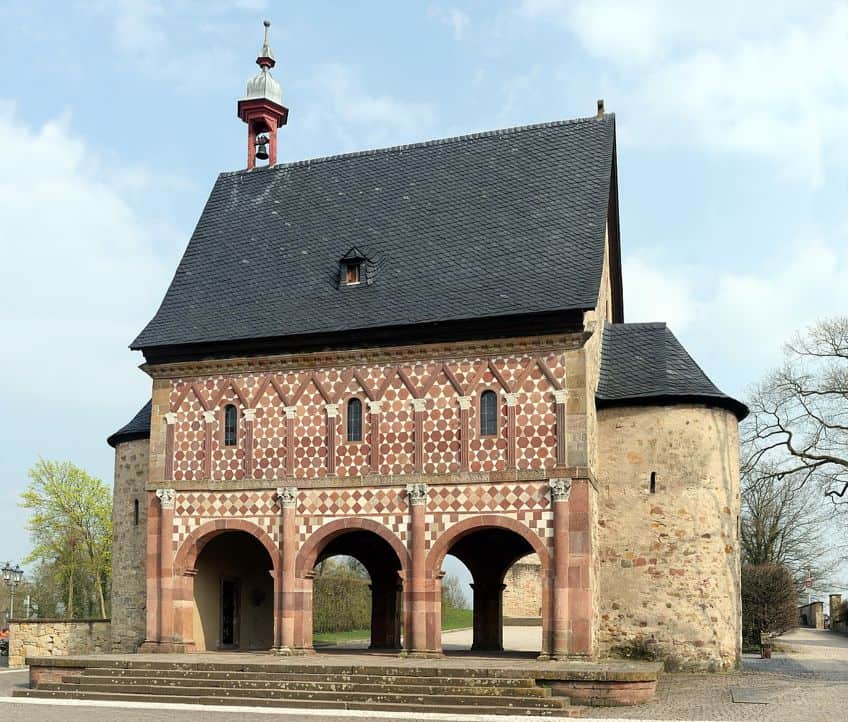
The Romanesque Style (10th – 12th Centuries)
The French Romanesque style would develop with the use of far thicker walls than had come before, rounded arches, barrel vaults, and large columns. One of the most famous instances of the French Romanesque style can be found in abbeys such as the Abbey of Saint Vigor. These common architectural attributes would go on to have a juxtaposed influence on one of the most famous forms of French architecture: Gothic architecture.

The French Gothic Style (1140 – 16th Centuries)
French Gothic architecture was one of the most prominent forms of French architecture and also one of the most famous. This form was characterized by its thin walls, immense height, use of rib vaults, flying buttresses, and stained-glass windows (with the rose window being one of the most gorgeous examples of this). This style would go on to be emulated throughout Europe, especially in England and Germany.
There are some incredibly famous French Gothic structures, and they generally tend to be churches, such as the Notre-Dame de Paris, Chartres Cathedral, and Reims Cathedral among others.

The French Renaissance Style (Late 15th – 17th Centuries)
The French Renaissance era was separated into two major periods. The early French Renaissance architectural style involved the wholesale copying of the original Italian Renaissance style. This is a common enough thing to occur, and it involved the use of attempts at a newer form of Classical architecture with proportion and symmetry serving as some of the primary goals of this architectural form.

Things started to change in about 1540 when French architecture, during this period, developed into its own form with the far more elaborate use of columns and pilasters (and the integration of numerous column orders into single structures). The French form of Renaissance architecture would go on to have a strong influence on subsequent architectural styles.
The French Baroque Style (1610 – 1774)
Baroque architecture naturally followed on from the late Renaissance era as it developed into an increasingly intricate style that favored elaborate decorative elements over the kind of simplicity that had come before. The French Baroque style became prominent during the reign of Louis XV.
It led to the creation of colossal façades, heavy use of cupulas and colonnades, and it is perhaps best exemplified by the dome of Les Invalides in Paris.
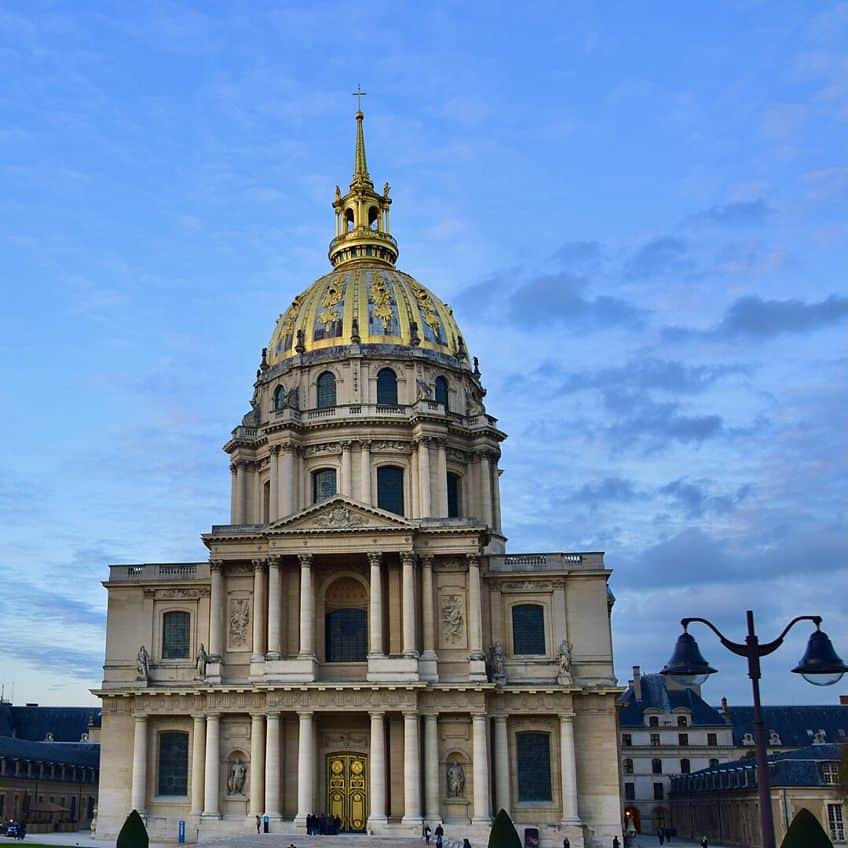
The Rococo Style (1730s – 1760s)
The Baroque style is often known as an overly decorative style, but that form had nothing on Rococo architecture. This is a style that entirely originated in France and it involved the use of excessive decoration and ornamentation with the use of many colors, sculptures, and curves. It is a highly theatrical style that would eventually become seen as far too opulent, and so the next major style in French architecture was a rebellion against everything that the Rococo style had come to represent. A purge needed to occur, and it came in the form of Neoclassical architecture.
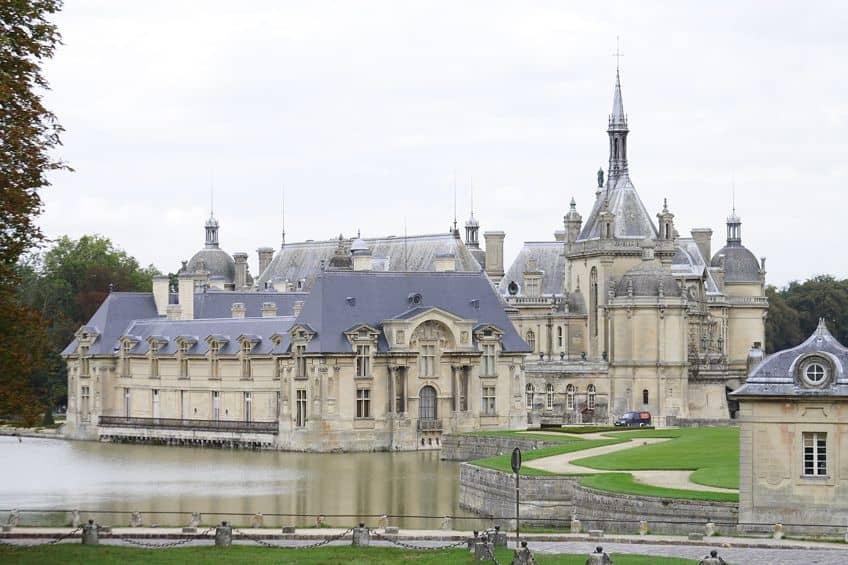
The Neoclassical Style (1760 – 1830)
If the Baroque and Rococo styles are characterized by opulent displays of decorative elements, the Neoclassical style in French architecture is characterized by the complete opposite. This is an attempt at a return to a Classical period in which the symmetrical and proportional aspects of Roman architecture, with their general lack of ornamentation and their highly developed use of columns, arches, and domes were more prominently used. This style would become an internationalist style as it lasted far longer than its most prolific period.
Styles like this, with their dedication to simplicity, would likely pave the way for more Modern varieties that would later emerge.
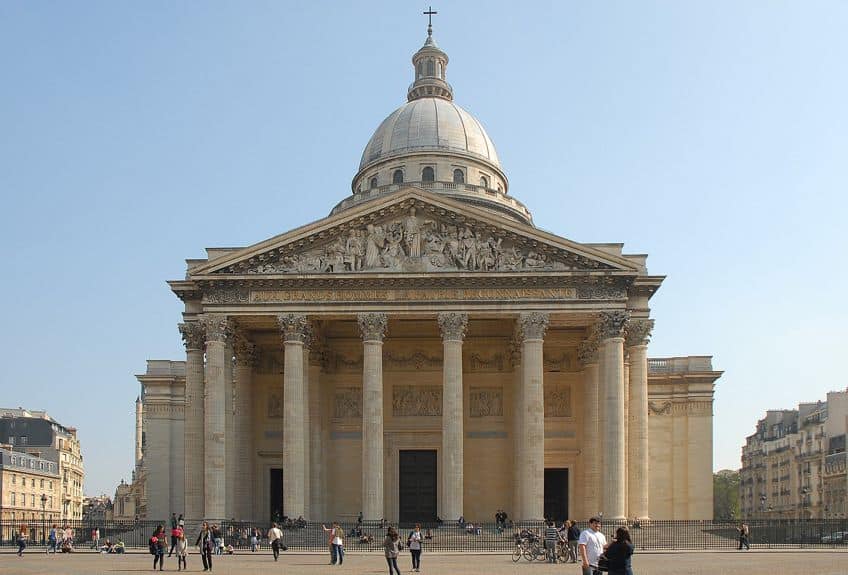
The Second Empire Style (1852 – 1870)
The Second Empire style was a rather eclectic array of differing architectural styles that were then combined into a new unity. This new form incorporated many modern materials and designs, such as glass skylights and iron frameworks as support structures. The interior and exteriors of these structures could often be mixed and matched as different styles were incorporated to produce something wholly unique.
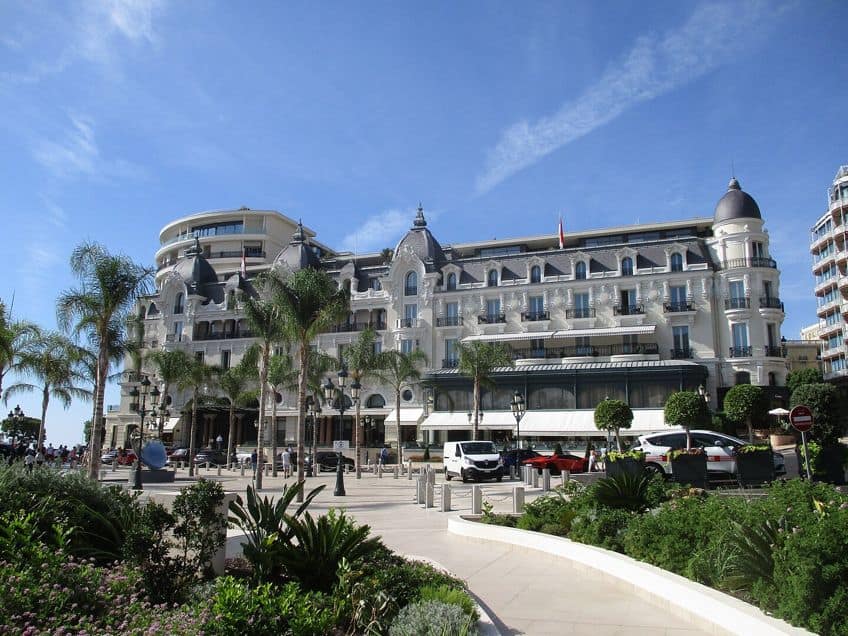
Modernism and Beyond
Modern French architecture would ultimately become one of the principal driving forces behind the Internationalist movement as French figures such as Le Corbusier had a profound influence on international Modernist architecture. This style, as a decidedly international style by design, may not have necessarily originated in France, but it certainly has contributed to Modernism in general.
Thereafter, other forms of international architecture, like Postmodern architecture, would be influenced by French designs and architects.
However, the development of international styles tends to erode individual differences between different countries. And so, while French architecture has had a strong influence on the architecture of the contemporary era, the age of French architecture as a distinct entity entirely separated from the international community may be at an end.
Examples of Famous French Buildings
There are many famous French buildings throughout France, and many of them are known far outside the bounds of France alone. We will now look at just five of the most famous French buildings and briefly discuss their history and primary architectural features. So, let’s have a look at some of these buildings.
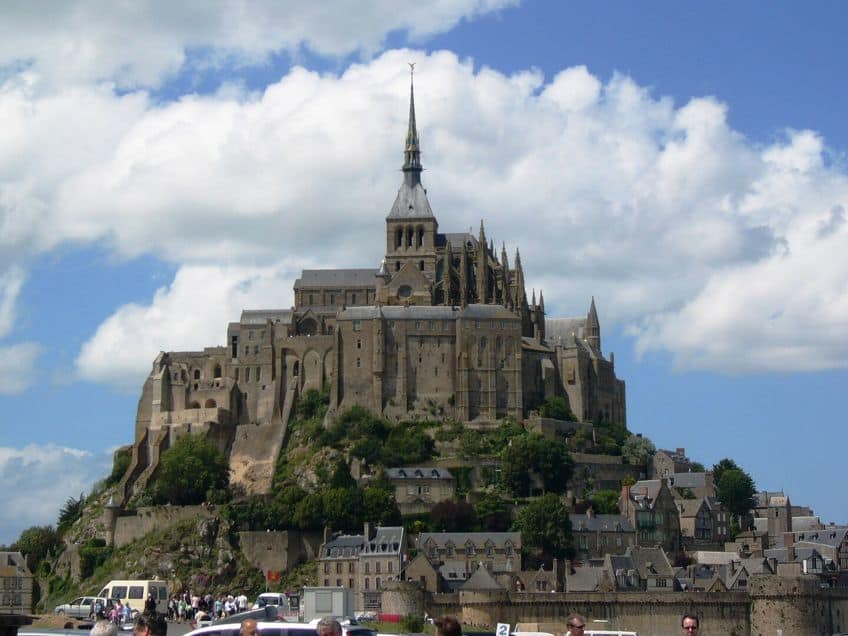
Notre-Dame de Paris (1163 – 1345) in Paris
| Architect | Jean de Chelles (12th Century CE) |
| Date Constructed | 1163 – 1345 |
| Function | Church |
| Location | Paris, France |
Notre-Dame de Paris is so famous as a piece of French architecture that most people do not even know that “Notre-Dame” is not the name of this structure. Instead, that term is used as a fairly common expression in French Catholic cathedrals to refer to the fact that it is a structure dedicated to the Virgin Mary. However, this particular piece of French architecture has become so synonymous with that term that it has entirely appropriated it. Notre-Dame de Paris is also a structure that stands as one of the most famous examples of a more classical French architecture in its influential French Gothic style. The cathedral makes use of rib vaults, flying buttresses, enormous stained-glass windows, and several rose windows.
Each of these Gothic characteristics would become associated with this architectural style, and Notre-Dame de Paris has them all.
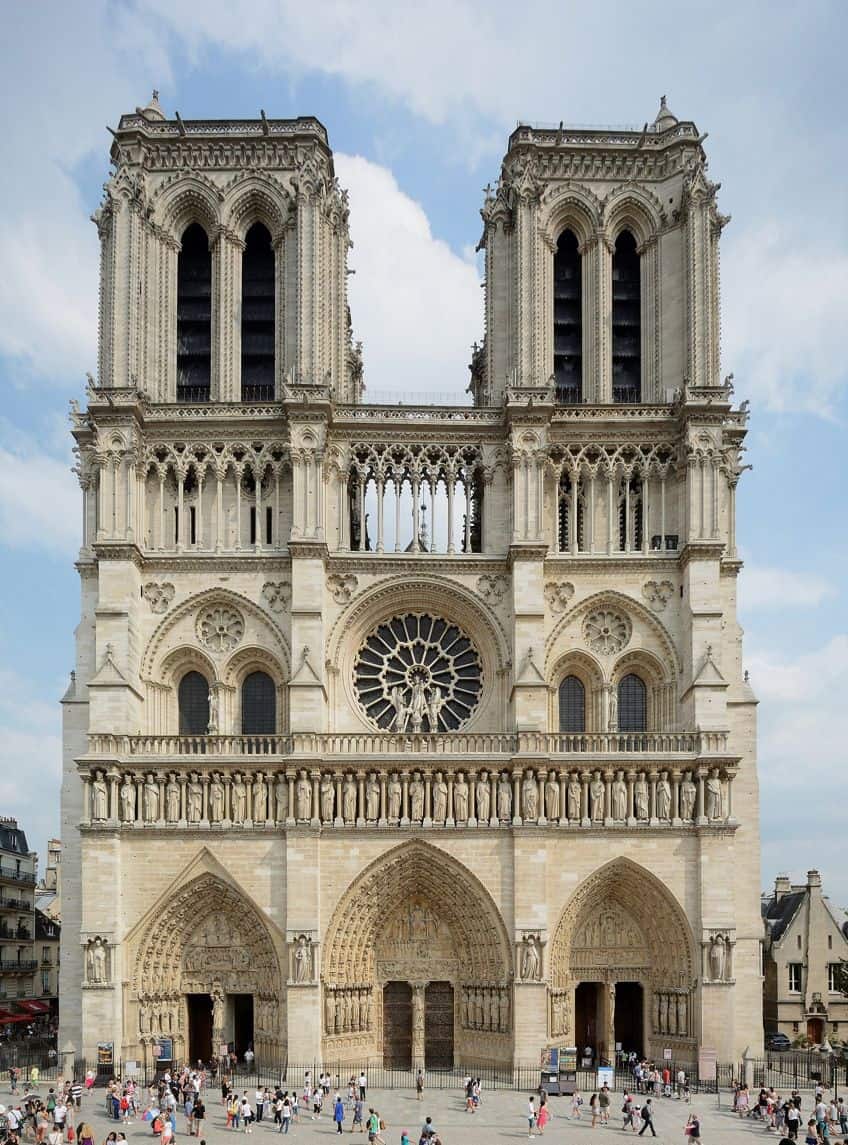
In addition to all this, this Gothic cathedral is an important landmark in the history of French architecture as it was heavily featured in Victor Hugo’s The Hunchback of Notre-Dame, and Hugo is generally considered to be one of the greatest French writers of all time. His championing of this famed cathedral likely led to much of the popularity that the church would later exhibit. Other immensely important aspects of this particular cathedral are the extensive array of sculptures, grotesques, and gargoyles that adorn the walls. Many of these sculptures depict biblical narratives that would have aided illiterate medieval churchgoers in understanding the narratives within the Bible. This is not unique to the Notre-Dame de Paris but is an integral part of the structure of this famous Catholic cathedral.
The Louvre (1190 – 1855) in Paris
| Architect | Various |
| Date Constructed | 1190 – 1855 |
| Function | Museum |
| Location | Paris, France |
The Louvre has lived a double life. While some of the most important pieces of architecture in France have retained some semblance of their original purpose, the same is not true of the Louvre. This structure started its life as a palace for the French royals, and it was turned into their primary residence in 1546. So, the Louvre Palace served as an integral part of the government of France for many centuries. This all came to an end though during the particularly bloody piece of French history known as the French Revolution.
The French Revolution led to many changes in the country, and it also led to a general hatred and desire for destruction with regard to many structures. For instance, the Chartres Cathedral was nearly destroyed in a revolutionary act in which a group wanted to plant explosives and literally blow the building up.
However, the Louvre was saved from this fate and was instead transformed into what it is today.
The Louvre may have once been a palace, but most do not know it for that reason at all anymore. Instead, the Louvre has become the world’s most-visited museum. It contains some of the most famous pieces of art in the world, such as the Mona Lisa. Some of the initial collection was actually confiscated from the royals and put on display for regular people to see, but the collection has expanded in many other ways over the last few centuries.

The building itself is also an architectural marvel that is made up of numerous pavilions and wings with a seeming dedication to architectural unity despite the building being constructed over the course of several centuries. The Louvre stands, to this day, as one of the most important pieces of French architecture.
Palace of Versailles (1661 – 1762) in Versailles
| Architect | Louis Le Vau (1612 – 1670) |
| Date Constructed | 1661 – 1762 |
| Function | Museum |
| Location | Versailles, France |
The Palace of Versailles is probably most famous in the modern day because it takes center stage in high school history classes around the world, not because of the structure itself, but because the catastrophic Treaty of Versailles was signed within its walls. This was the Post-World War One treaty that has often been partially held to account for its role in the rise of Adolf Hitler thanks to the immensely damaging terms of the treaty.
However, the Palace of Versailles is more than just the location of an old 20th-century piece of legislation, it was also once a central palace under the Kings of France.
After this palace was constructed, it eventually became the seat of the French government because the King liked the palace that much. It was also later used as the summer residence of Napoleon I and was even later re-occupied by the royals during the Bourbon Restoration. This palace has had royals and powerful people flitting in and out of it for centuries.

In addition to being important in world history, it is also important in the history of French architecture. This palace would become one of the most famous and spectacular pieces of architecture in the country and would serve as a grand palace that had few rivals around the world. Several Neoclassical additions were made later in the palace’s existence, and these aided in the rise of Neoclassicism around Europe.
Arc de Triomphe (1806 – 1836) in Paris
| Architect | Jean Chalgrin (1739 – 1811) |
| Date Constructed | 1806 – 1836 |
| Function | Triumphal arch |
| Location | Paris, France |
The Arc de Triomphe de l’Étoile is an immensely famous site in Paris. This important piece of architecture in France has become a perfect example of the influence of Classical architecture on the country. This instance of Classical French architecture is a triumphal arch that was designed to be evocative of Roman triumphal arches like the Arch of Titus. It is also full of elaborate engravings and sculptures, and it stands at a rather massive height of 50 m (or 164 ft), and this height is not often appreciated in the photographs one might see of this structure.
The Arc de Triomphe is located in the center of twelve different avenues that radiate outwards from it, and so the very floorplan of the roads complements it. It was also originally ordered by Napoleon I but was only finished during the Bourbon Restoration by King Louis-Philippe. This new patron did not stop the structure from being used to commemorate Napoleon I when he passed away, and he was passed underneath it on his way to Les Invalides.
In addition, the body of Victor Hugo was also passed under the famed arch.
The arch itself was designed in a Neoclassical style with various sculptures depicting militaristic victories in both the Napoleonic Wars and the French Revolution, and it also contains a list of many generals who fought these conflicts. In addition, there is a detailed frieze on the attic structure that is magnificent in its construction. One can even reach the top of the arch and either peruse the museum within it or travel to the roof and gaze out at the Parisian landscape around it.
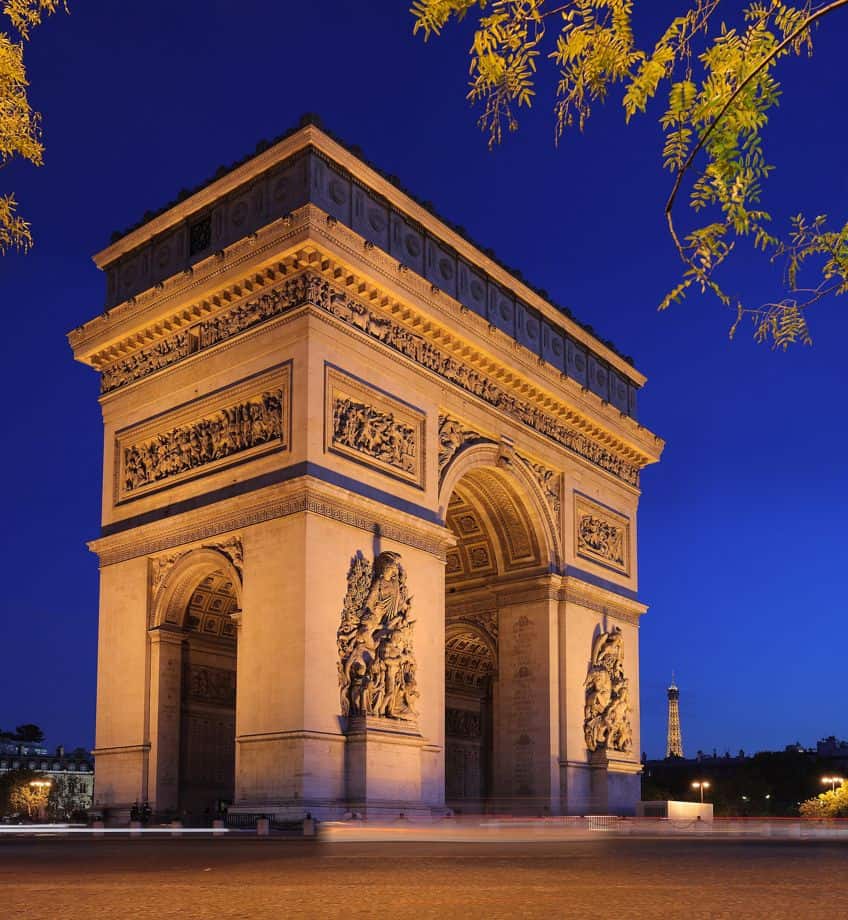
Lastly, one of the most important aspects of the Arc de Triomphe is the fact that it houses the French Unknown Soldier beneath it. The arch was always a symbol to represent military victories and losses and commemorating the lives of the soldiers who died in the First World War was simply a logical next step for this famed piece of French architecture.
Eiffel Tower (1887 – 1889) in Paris, France
| Architect | Maurice Koechlin (1856 – 1846), Émile Nouguier (1840 – 1897), and Stephen Sauvestre (1847 – 1919) |
| Date Constructed | 1887 – 1889 |
| Function | Observation and broadcasting tower |
| Location | Paris, France |
The Eiffel Tower is probably the most famous structure in France. The Eiffel Tower has become so closely associated with Paris that one cannot disconnect these two things from one another: there is no modern Paris without the Eiffel Tower. This is probably why it would confuse and baffle some people to know that the Eiffel Tower was not meant to be a permanent structure.
The Eiffel Tower was designed and constructed by a company founded by Gustave Eiffel, hence the name of the tower in question, and they created a lattice tower made of wrought iron.
It was built in a remarkably speedy manner between 1887 and 1889, and it was only constructed for the 1889 World’s Fair in Paris. However, it became such a sensation that they left it up. It is one of the most visited landmarks in the world and it has even doubled as a radio tower since the beginning of the 20th century.
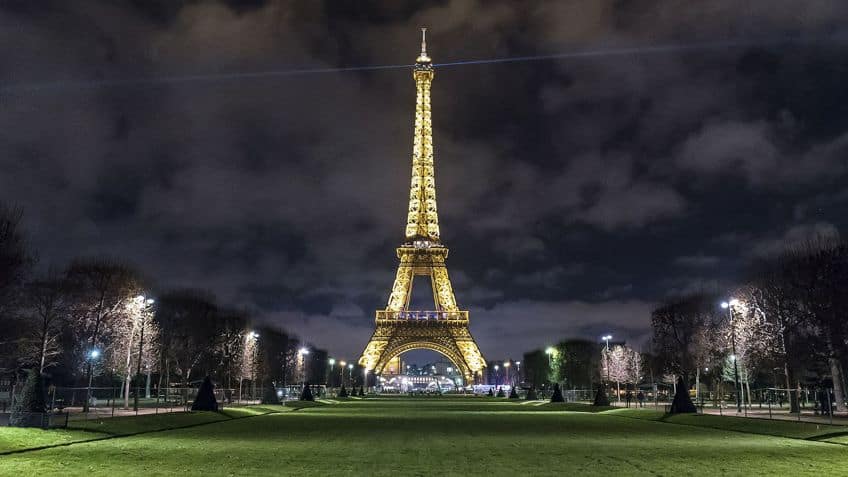
Not to mention the fact that you can ascend the tower and either check out the observation deck that gives you a stunning panoramic view of Paris, or you can visit the restaurant atop the famed Parisian structure. Either way, this is one of the most important pieces of architecture in France and a structure that forever changed the skyline of Paris.
We have come to the end of our discussion about French architecture. We looked at the various French architecture styles that originated and/or developed in the country over the centuries, and also examined five of the most famous French buildings to have ever been constructed. Hopefully, you’ve learned a good few things about French architecture, and all we can say now is that we wish you a good day/week/month ahead!
Frequently Asked Questions
What Is the Most Famous French Building?
There are many famous French buildings, but it’s very possible that the Eiffel Tower is the most famous French building of them all. The Eiffel Tower is probably also one of the most famous buildings in the world. It may be an example of more modern French architecture, but it quickly became the most famous landmark in one of the most famous cities in the world. It’s reached the point where pre-Eiffel Tower images of Paris appear strange because you assume the famous tower should be there.
What Are the Central Characteristics of French Architecture
There are no real central characteristics of French architecture as a whole, as there is just such a wide array of different French architecture styles that have developed over the centuries. Each of these styles has its own array of characteristics worth examining and interrogating, and they all also have their own period in which they were most prevalently used. The known architecture of the French civilization goes back to Roman times, so there have been a few different varieties over the years.
How Many Different French Architectural Styles Are There?
Many different architectural styles have been used throughout French history. There are some of the earliest architectural forms that were developed alongside Roman influences, and then several Medieval styles before the development of French iterations of movements like Renaissance, Baroque, and Rococo architecture. However, this is not a complete list as this is only a list of some of the most famous forms.
Justin van Huyssteen is a writer, academic, and educator from Cape Town, South Africa. He holds a master’s degree in Theory of Literature. His primary focus in this field is the analysis of artistic objects through a number of theoretical lenses. His predominant theoretical areas of interest include narratology and critical theory in general, with a particular focus on animal studies. Other than academia, he is a novelist, game reviewer, and freelance writer. Justin’s preferred architectural movements include the more modern and postmodern types of architecture, such as Bauhaus, Art Nouveau, Art Deco, Brutalist, and Futurist varieties like sustainable architecture. Justin is working for artfilemagazine as an author and content writer since 2022. He is responsible for all blog posts about architecture.
Learn more about Justin van Huyssteen and about us.
Cite this Article
Justin, van Huyssteen, “French Architecture – The History of French Architecture.” artfilemagazine – Your Online Art Source. July 3, 2023. URL: https://artfilemagazine.com/french-architecture/
van Huyssteen, J. (2023, 3 July). French Architecture – The History of French Architecture. artfilemagazine – Your Online Art Source. https://artfilemagazine.com/french-architecture/
van Huyssteen, Justin. “French Architecture – The History of French Architecture.” artfilemagazine – Your Online Art Source, July 3, 2023. https://artfilemagazine.com/french-architecture/.


